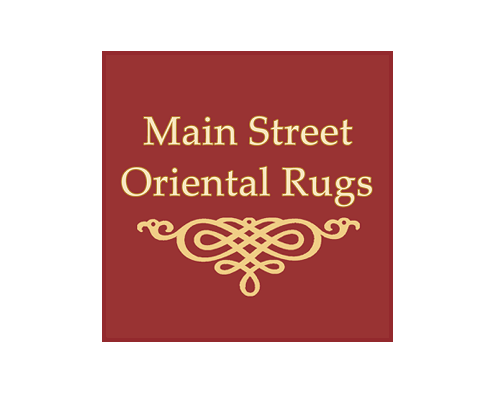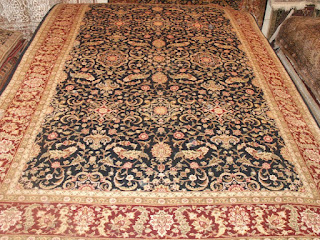Main Street Oriental Rugs currently has in stock many new selections. Among these rugs are Karaja, Gabbeh and Persian Qum. Karaja is a village northwest of Iran. Karaja rugs
often have geometric designs and feature repeating medallions, which gives them
a unique distinction from other rugs made in northwestern Iran. This particular rug is an antique, approximately 70 years old.
Antique Karaja 2ft 8in by 16ft 8in
A similar rug to the Karaja rug that Main Street Oriental Rugs also has in stock is a Sarab. Sarab rugs are a type of Karaja rug that has a finer weave. This Sarab is 2ft 5in by 13ft 6in.
This Gabbeh runner is one of the many runners in stock at Main Street Oriental Rugs. Gabbeh rugs are traditionally triple-knotted rugs that are
woven by the women of the Qashqai tribes of Iran. They are usually thicker than other Persian
rugs and tend to have simple rectangular designs. They contain the natural colors of the wool
or are dyed with natural dyes. Gabbeh rugs have low knot counts compared to other Persian rugs.
Gabbeh 3ft by 13ft
Two more rugs that Main Street Oriental Rugs recently acquired are called Persian Qum. Qum carpets are among the finest in the world. Although it does not boast a long and ancient history, Qum, south of Tehran, creates exceptional works of art, frequently in pure silk. Qum has no pattern unique to their city, so its carpets are produced in a variety of beautiful and historic designs, demanding prices in the highest range of all Persian weaving. Although signatures are found on fine rugs made elsewhere, the weavers of Qum take enormous pride in their products.
Persian Qum 4ft 3in by 6ft 8in
Persian Qum 7ft 3in by 5ft 3in







